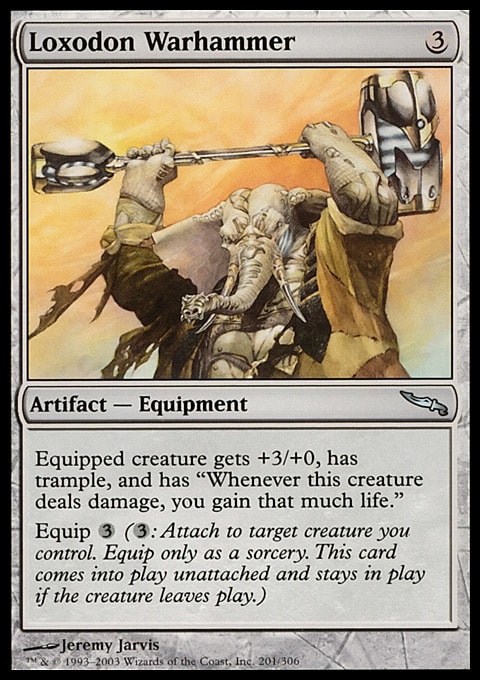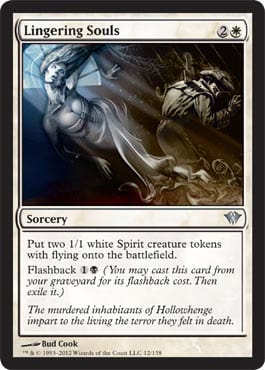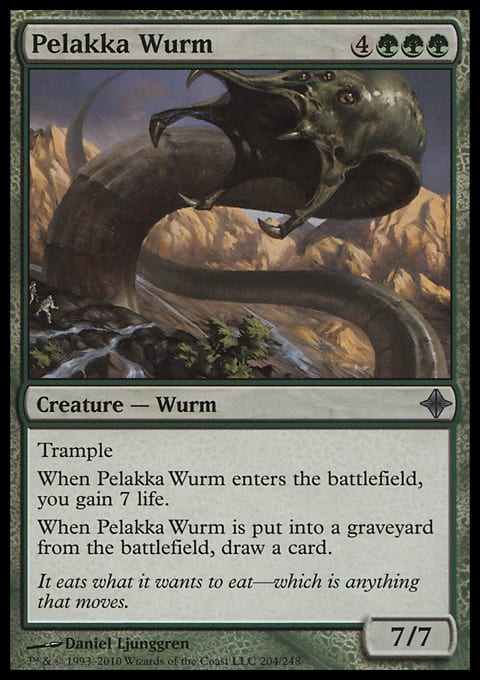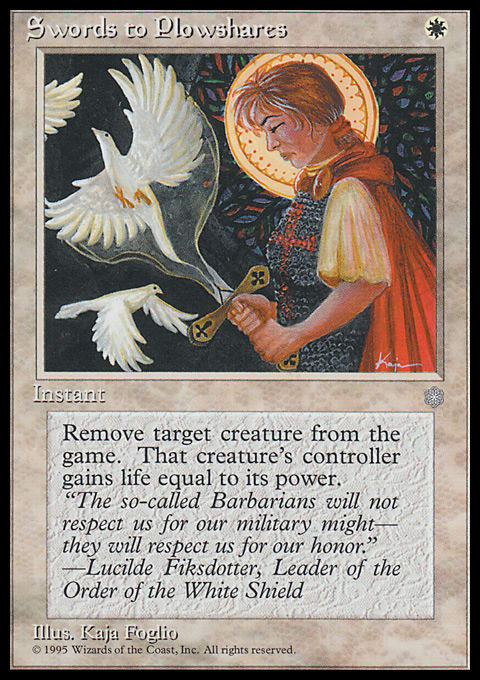Gather ’round all, and let me tell you a tale of the greatest format of all time: Rotisserie Draft. The premise is relatively simple. Obtain one copy of every card from a given set, and have eight players draft from the face-up pool until each player makes a predetermined number of picks. In most cases, what’s called a wheel is used, in which the eighth-seated player has two picks in the rotation, and pick order snakes back to the first seat. Rinse and repeat.
Today, I don’t want to simply discuss Rotisserie Draft in and of itself, but rather its role within the context of another great format: Cube. More specifically, I’ll be discussing my Common/Uncommon Cube (C/Ube). By now, most of you are probably familiar with cubing, be it from the format’s introduction to Magic Online or its flourishing reputation within the paper-playing community. Cube is tailor-made for Rotisserie Draft. As Cubes are naturally singleton entities, the only preparation needed for a Rotisserie is color-sorting for ease of drafting.
But what sets Cube Rotisserie apart from Rotisserie drafting a normal Magic set? For me, it’s related to the spectrum of power level. If one were to draft Theros, for example, the difference in power level between Elspeth, Sun's Champion and Yoked Ox is quite large. In Cube, all the cards are typically very playable and/or of a very high power level. While there are some clear winners, it’s more difficult to discern which is the very best, and therefore, the format is not so easily solved. You can think of Rotisserie as a simple thought experiment. If you could assemble the perfect Draft from a given set (with the restriction that you can only have one copy of any particular card), what would your deck look like? With the consideration of seven other drafters, what cards would you have to prioritize?
The first eight or nine picks of a Cube Rotisserie start to reveal many different answers to these questions. Let’s go over two examples. The following picks were made from the C/Ube back in August at Gen Con:

1 – Loxodon Warhammer – Opening with a flexible pick such as an artifact or land is a strong strategic option when in the first position of the Draft. Seeing everyone’s picks is a tremendous resource in planning your own Draft, and that’s another exciting draw when it comes to Rotisserie. The artifact pick ensures that the first seat is able to see, at minimum, two picks from the remaining seven players before deciding on a color. Ultimately, I think Grafted Wargear is a much stronger Equipment in the C/Ube, but this player had the idea right.
2 – Demonic Tutor – Identifying unique effects is important to a successful Draft. While Cubes containing rares might have some redundancy when it comes to tutor effects, Demonic is the only one of its kind in my C/Ube. I think this pick belongs in the first eight every time.
3 – Strip Mine – Speaking from a strictly competitive perspective, this pick is flexible, unique, and powerful, making it, in my opinion, the best overall first pick.
4 – Bloodbraid Elf – This pick sort of flies in the face of what seat one is trying to do. Despite that, I like that this seat is staking claim so early on. One pick may not commit anyone to a particular color(s), but certainly, this player will look to be R/G. And when it comes to multicolored cards, Bloodbraid is among the strongest.
5 – Lingering Souls – Lingering Souls does much of the same as the Bloodbraid pick but at a lower cost of commitment. The card fits into several archetypes and is reasonable even if one cannot consistently flash it back.
6 – Animate Dead – This pick again signals a specific archetype, and it is also quite a bit more flexible. The Reanimator deck is fairly defined in my C/Ube, but this could still fit fine into your everyday U/B control or even Mono-Black.
7 – Fact or Fiction – This feels like a mistake. I think Fact is a good card, but it doesn’t do anything particularly unique, and it’s at a fairly steep price. I think Fact is incredibly overrated in all sorts of Cubes, possibly because of how powerful it was back in its day. In this Cube in particular, Opportunity may even be the better draw spell. This person is clearly playing it safe, but he or she is only gaining flexibility here and not power.
8/9 – Goblin Bombardment/Blood Artist – This was my seat in the Draft, and I’m fairly happy about how I maneuvered this pick. Bombardment was a fairly new addition and was confirmed very powerful. For my wheel, I took another key card in the B/R Sacrifice deck—the one I felt was most important and that others might be interested in. This allowed me to signal the archetype, take more flexible cards for my subsequent picks, and pick up archetype staples that no one else wanted much later in the Draft. I went on to win the Rotisserie, and I felt that half the work was done with these first two picks.
Let’s see another set of picks, made at Grand Prix DC in November, specifically looking at cards we didn’t see in the first set:

1 – Strip Mine
2 – Pelakka Wurm – Pelakka Wurm represents one of very few excellent Ramp/Reanimation creatures in the C/Ube. The others are Ulamog's Crusher, Artisan of Kozilek, and Trostani's Summoner. In a Rare Cube, Sundering Titan, Terastodon, and Griselbrand are all good parallels. I like Wurm out of the four because it’s the only card that can dig you out of a losing position. It doesn’t solidify you in green—again, it’s an excellent Animate Dead target—but it still might scare the next player in line from taking any green cards.
3 – Fact or Fiction
4 – Bloodbraid Elf
6 – Rakdos Cackler – This pick looks underpowered and underwhelming, but I at least like what it’s trying to do. Cackler very clearly signals an aggressive strategy to the rest of the table. If red doesn’t work out, Mono-Black is still a viable option. I discussed this pick with the player, and we agreed that Grafted Wargear ultimately would have been a better choice. It’s a more powerful card that essentially accomplishes the same thing as the Cackler and allows you to see the picks of the seventh and eighth seats before even considering a colored card.
7 – Swords to Plowshares – I like being proactive in Cube, and so Swords would probably never enter into my list of first picks. Still, I can’t fault this one. Swords is one of the most efficient removal spells, and it is a good foil to problematic cards such as the aforementioned Pelakka Wurm. It’s plenty flexible, and there are multiple directions you can take this pick in.
8/9 – Mother of Runes/Lightning Helix – I like Mother a lot here despite it following the preceding player’s white card. You’d much rather have Path to Exile over Swords in an aggressive white strategy, and that signals that the seventh seat may be considering more of a control deck. The Lightning Helix is more questionable. I prefer to stick to one color this early on, and even if you did want to venture into a second, Lightning Helix is a lot less impressive than, say, Lightning Bolt.
A quick aside on one card left out if you’re a fan of C/Ube: Crystal Shard. I am certain this is among the top five cards in my C/Ube, and it’s an easy pick in the first round of the Rotisserie. In the second example, I was in the first seat and wheeled Crystal Shard and Mulldrifter. It felt like a big oversight considering I was last to receive my second pick. It’s a card so powerful I was happy to fight with several others over blue throughout the Draft.
This is the stuff that makes Rotisserie Draft awesome. There’s so much strategy going on, even in just the first two picks. Your picks directly influence those of your opponents and vice versa. Unlike a normal Draft, wherein you may only slowly gauge what colors are open—or whether it’s necessary to hate a card—the information to determine these answers is available to you throughout the Draft. All of this, in turn, makes for more powerful decks and greater game strategy. You’re able to play around cards you know opponents are playing right off the bat, and you don’t have to play around those that went to someone else. You can use excess picks to draft sideboard strategies against specific decks at the table you’re worried about. The list goes on and on.
My intention in writing this article is to inspire those who read it to go try Rotisserie if they haven’t already. Although today I spoke about cards specific to my own Cube, the same strategies translate to any list. Whether you choose to stay flexible or stake your claim to an archetype, I hope that you have as much fun trying to decipher the format as I do.
Happy Cube Rotisserie’ing!





























